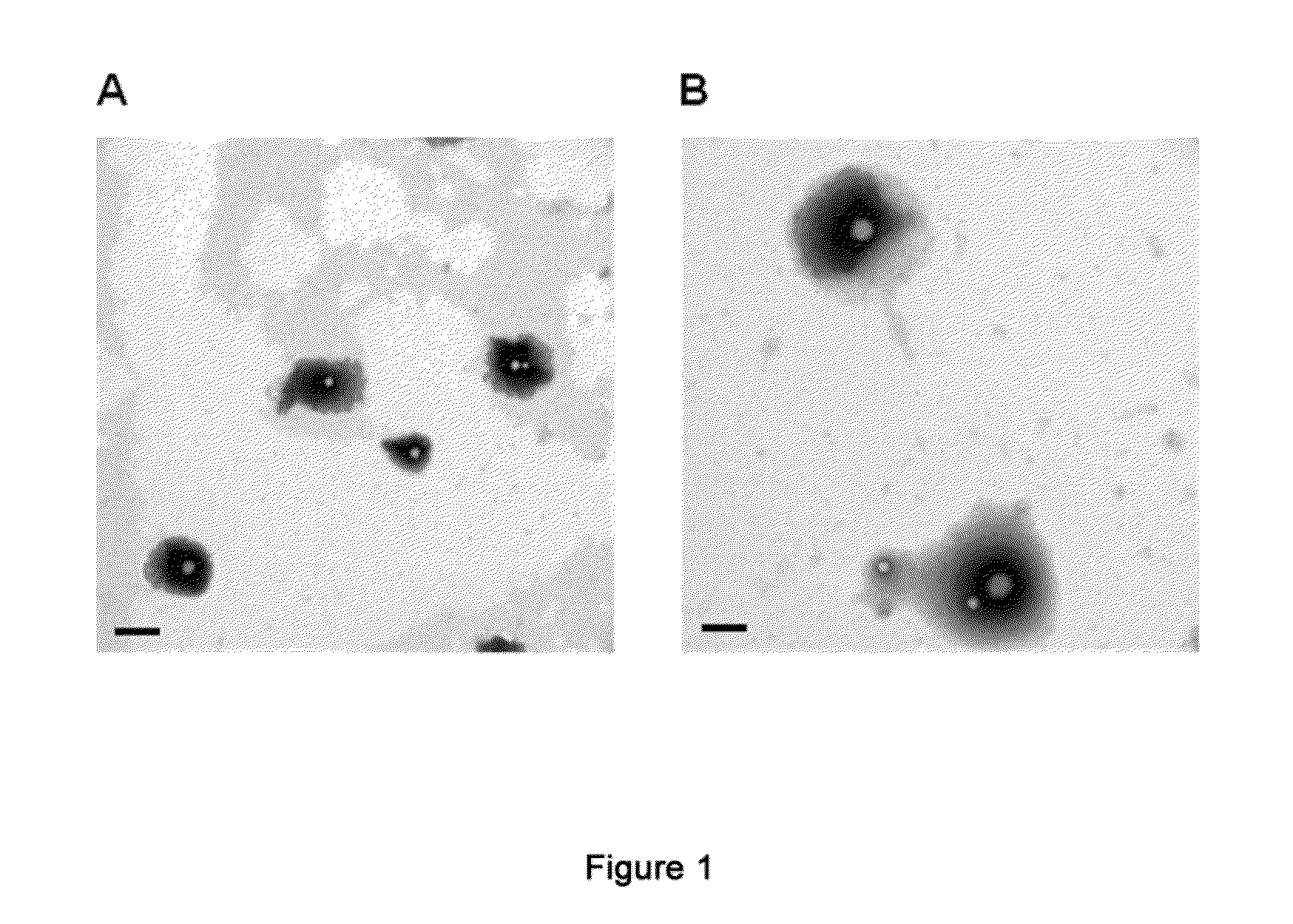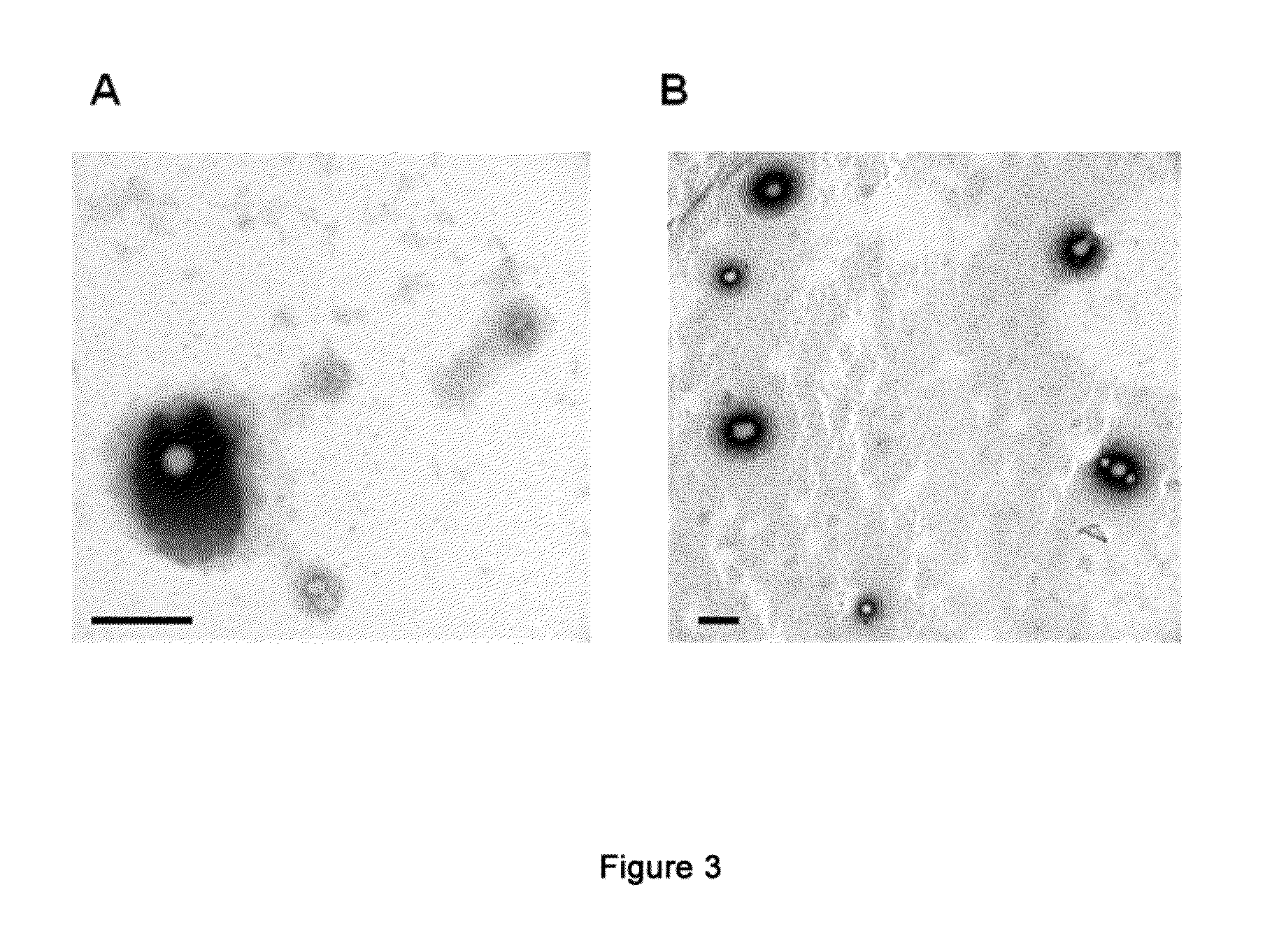Nanoparticles for encapsulation of compounds, the production and uses thereof
a technology of nanoparticles and compounds, applied in the field of nanoparticles for encapsulation of compounds, the production and use thereof, can solve the problems of limited limited use of antioxidant compounds in the design of functional foods, and general limitation of application of encapsulated antioxidant compounds in the food field
- Summary
- Abstract
- Description
- Claims
- Application Information
AI Technical Summary
Benefits of technology
Problems solved by technology
Method used
Image
Examples
example 1
Preparation and Characterization of Empty Zein Nanoparticles. Yield of the Obtaining Process. Influence of the Amount of Lysine Incorporated in the Formulation on the Physicochemical Characteristics of the Nanoparticles
[0209]60 mg of zein (Sigma-Aldrich) together with 10 mg of lysine (Sigma-Aldrich) were dissolved in 8.8 mL of a 50% (w / v) ethanol solution. Subsequently, 8.8 mL of water were added on this solution under magnetic stirring and a constant flow to form the nanoparticles. This process was performed in triplicate.
[0210]FIGS. 1 (A and B) shows the images obtained by transmission electron microscopy of the zein particles obtained by this method.
[0211]For the purpose of knowing the influence of lysine and the percentage of ethanol of the initial hydroalcoholic solution on the physicochemical characteristics of the nanoparticles, 3 new formulations were prepared by varying these parameters: (i) one of them without lysine, (ii) another one with lysine and the initial hydroalcoh...
example 2
Preparation and Characterization of Zein Nanoparticles Containing Resveratrol. Influence of the Lysine and Resveratrol Content on the Encapsulation Efficiency
[0216]Different hydroalcoholic solutions were prepared, all of them containing 60 mg of zein and variable amounts of lysine (0, 5, 10 or 20 mg) in a final volume of 8.8 mL of 50% ethanol.
[0217]In addition, 47 mg of resveratrol were dissolved in 15 mL of ethanol and then diluted to 24 mL with water.
[0218]Variable volumes of the resveratrol solution (1, 2 or 3 mL) were subsequently added on the different zein solutions prepared. After 5 minutes of incubation, 8.8 mL of water were added on the mixture under magnetic stirring and a constant flow. This process was performed in triplicate for each type of formulation.
[0219]Table 4 shows the physicochemical characteristics of the nanoparticles obtained in each case.
TABLE 4Physicochemical characteristics of the zein nanoparticles(initially dissolved in 50% ethanol (w / v)) with variable ...
example 3
Preparation and Characterization of Zein Nanoparticles Containing Resveratrol Dried by Aspiration (Spray Drying)
[0223]126 mg of zein were dissolved together with 21 mg of lysine in 14 mL of 50% (w / v) ethanol.
[0224]In addition, 60 mg of resveratrol were dissolved in 10 mL of ethanol and 1.4 mL of that solution were subsequently collected and taken to a final volume of 2.8 mL with water.
[0225]1.1 mL of the diluted resveratrol solution were then added on the zein solution and the mixture was left to incubate for 5 minutes. After that time, 15 mL of water were added to the mixture under magnetic stirring and a constant flow.
[0226]Finally, 260 mg of maltodextrin were added to the mixture before drying it by means of using the spray dryer. The conditions of the process were:[0227]Air inlet temperature: 110° C.[0228]Air outlet temperature: 70° C.[0229]Air pressure: 6 bar [6×105 Pa][0230]Sample pumping rate: 4.5 mL / min[0231]Aspiration: 94%[0232]Air flow: 700 L / h
[0233]Table 6 summarizes the ...
PUM
| Property | Measurement | Unit |
|---|---|---|
| Percent by mass | aaaaa | aaaaa |
| Percent by mass | aaaaa | aaaaa |
| Percent by mass | aaaaa | aaaaa |
Abstract
Description
Claims
Application Information
 Login to View More
Login to View More - R&D
- Intellectual Property
- Life Sciences
- Materials
- Tech Scout
- Unparalleled Data Quality
- Higher Quality Content
- 60% Fewer Hallucinations
Browse by: Latest US Patents, China's latest patents, Technical Efficacy Thesaurus, Application Domain, Technology Topic, Popular Technical Reports.
© 2025 PatSnap. All rights reserved.Legal|Privacy policy|Modern Slavery Act Transparency Statement|Sitemap|About US| Contact US: help@patsnap.com



